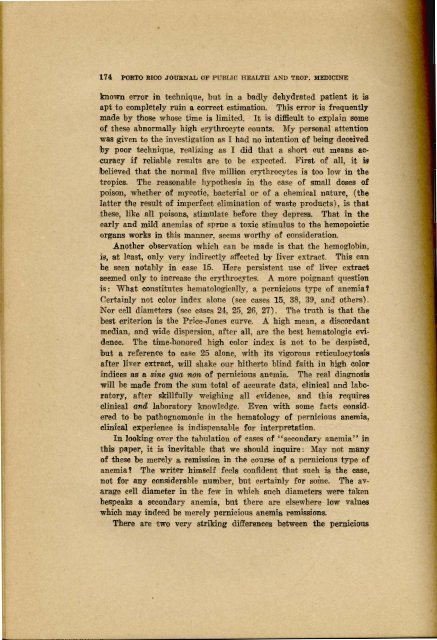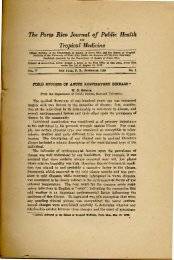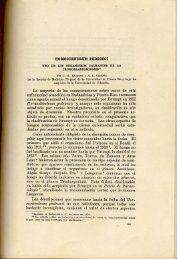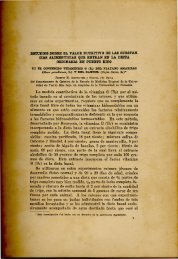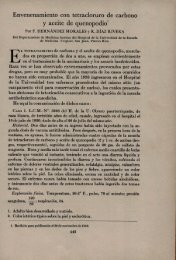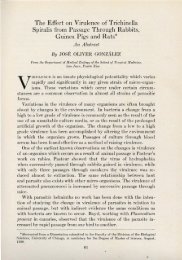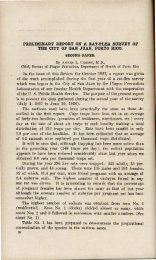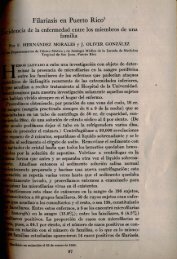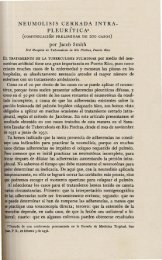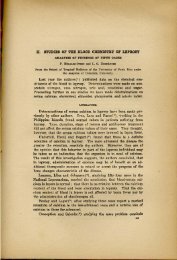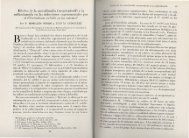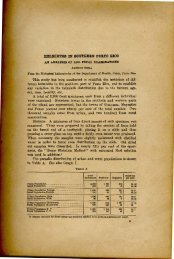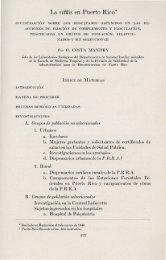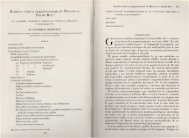Classification of Anemias.pdf
Classification of Anemias.pdf
Classification of Anemias.pdf
You also want an ePaper? Increase the reach of your titles
YUMPU automatically turns print PDFs into web optimized ePapers that Google loves.
174 PORTO RICO JOURNAL OF P UBLIC H EAIJTH AND TROP. MEDICINE<br />
known error in technique, 'but in a badly dehydrated patient it is<br />
apt to completely ruin a correct estimation. This error is fre quently<br />
made by those whose tim e is limited. It is difficult to explain some<br />
<strong>of</strong> these abnormally high eryth r ocyte counts. My personal attention<br />
was given to the investigation as I had no intention <strong>of</strong> being deceived<br />
by poor technique, realizing as I did that a short cut means accuracy<br />
if reliable results arc to be expected. F irst <strong>of</strong> all, it is<br />
!believed that th e normal five million erythrocytes is too low in the<br />
tropics. The reasonabl e hypothesis in t he caSe <strong>of</strong> small doses <strong>of</strong><br />
poison, whether <strong>of</strong> mycotic, bacterial or <strong>of</strong> a chemical nature , (the<br />
latter the result <strong>of</strong> imperfect elimination <strong>of</strong> waste products) , is that<br />
these, like all poisons, stimulate before th ey depress. That in the<br />
early and mild anemias <strong>of</strong> sprue a toxic stimulus to the hemopoietic<br />
organs works in this manner , seems worthy <strong>of</strong> consideration.<br />
Another observation which can be made is that th e hemoglobin ,<br />
is, at least, only very indirectly affected by liver extract. This can<br />
be seen notably in case 15. H ere persistent use <strong>of</strong> liver extract<br />
seemed only to increase the erythrocytes, A more poignant question<br />
is: Wh at constitutes hematologically, a pernicious type '<strong>of</strong> anemi a '<br />
Certainly not color index alone (see cases 15, 38, 39, and others) .<br />
iNor cell diameters (see cases 24, 25, 26, 27) . The truth is that the<br />
best criterion is the Price-Jones curve. A high mean , a discordant<br />
medi an, and wide dispersion, after all, are the best hematologic evidenc<br />
e. The ti me-honored high color index is not to be despised,<br />
but a reference to case 25 alone, with its vigorous reticulocytosls<br />
after liver extract, will shake our hitherto blind faith in high color<br />
indices as a sine qua non <strong>of</strong>' pernicious anemia. The real diagnosis<br />
will be made from the sum total <strong>of</strong> accurate data, clinical and lab o<br />
r atory, after skillfully weighing all evidence , and this requires<br />
clinical and laboratory knowledge. Even with some facts considered<br />
t o be pathognomonic in the hematology <strong>of</strong> pernicious anemia:<br />
clinical experience is indispensable for interpretation.<br />
In looking over the ta bulatio n <strong>of</strong> cases <strong>of</strong> "secondary anemia" in<br />
this paper, it is inevitable that we should inquire : May not many<br />
<strong>of</strong> these be merely a. remission in the course <strong>of</strong> a pernicious typ e <strong>of</strong><br />
anemia The writer himself feels confident th at such is the ease,<br />
not for any considerable number, but certainly for some. The avarage<br />
cell diameter in the few in which such diam eters were taken<br />
bespeaks a secondary anemia, but there are elsewhere low values<br />
which may indeed be merely pernicious anemia. remissions.<br />
There are two very striking differences between the pernleious


